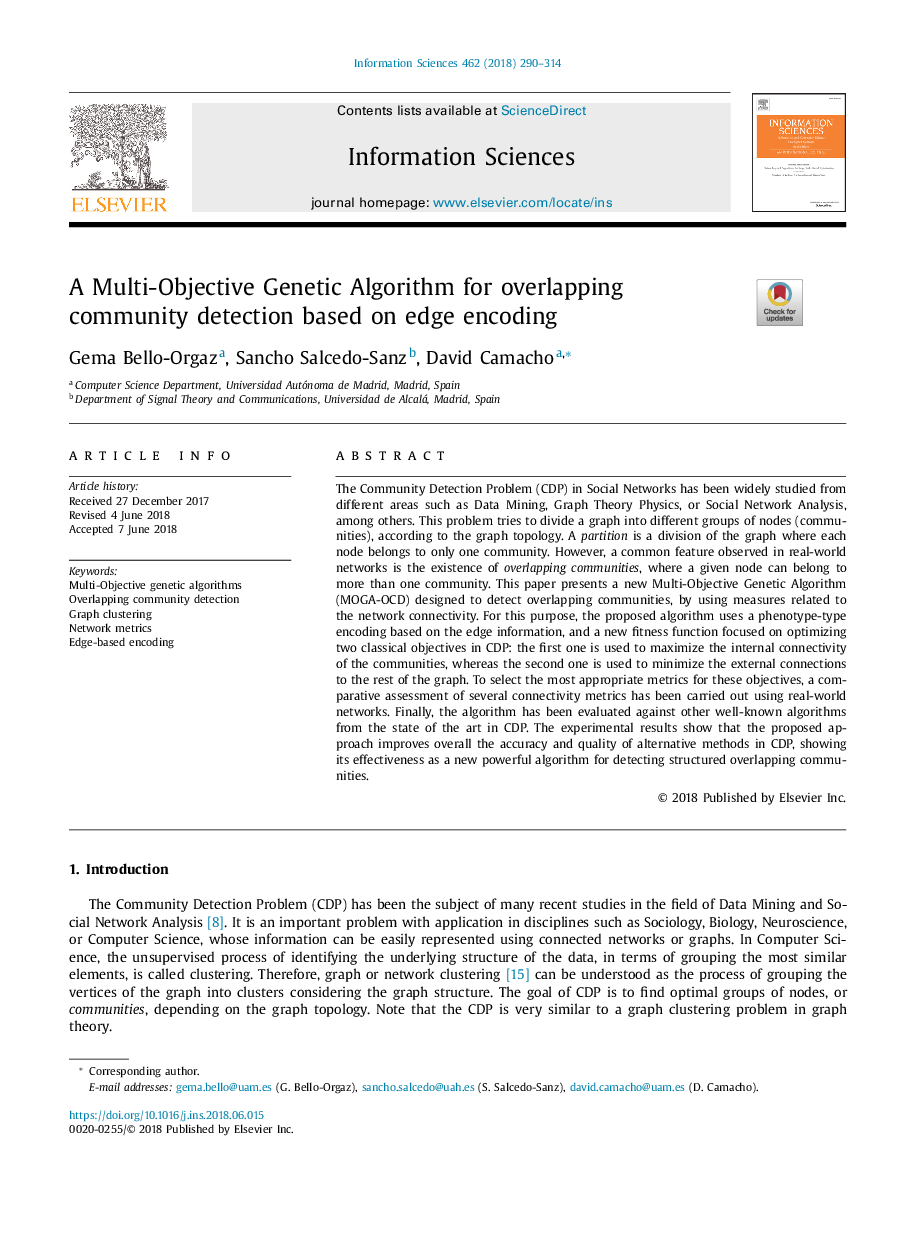| Article ID | Journal | Published Year | Pages | File Type |
|---|---|---|---|---|
| 6856246 | Information Sciences | 2018 | 25 Pages |
Abstract
The Community Detection Problem (CDP) in Social Networks has been widely studied from different areas such as Data Mining, Graph Theory Physics, or Social Network Analysis, among others. This problem tries to divide a graph into different groups of nodes (communities), according to the graph topology. A partition is a division of the graph where each node belongs to only one community. However, a common feature observed in real-world networks is the existence of overlapping communities, where a given node can belong to more than one community. This paper presents a new Multi-Objective Genetic Algorithm (MOGA-OCD) designed to detect overlapping communities, by using measures related to the network connectivity. For this purpose, the proposed algorithm uses a phenotype-type encoding based on the edge information, and a new fitness function focused on optimizing two classical objectives in CDP: the first one is used to maximize the internal connectivity of the communities, whereas the second one is used to minimize the external connections to the rest of the graph. To select the most appropriate metrics for these objectives, a comparative assessment of several connectivity metrics has been carried out using real-world networks. Finally, the algorithm has been evaluated against other well-known algorithms from the state of the art in CDP. The experimental results show that the proposed approach improves overall the accuracy and quality of alternative methods in CDP, showing its effectiveness as a new powerful algorithm for detecting structured overlapping communities.
Keywords
Related Topics
Physical Sciences and Engineering
Computer Science
Artificial Intelligence
Authors
Gema Bello-Orgaz, Sancho Salcedo-Sanz, David Camacho,
